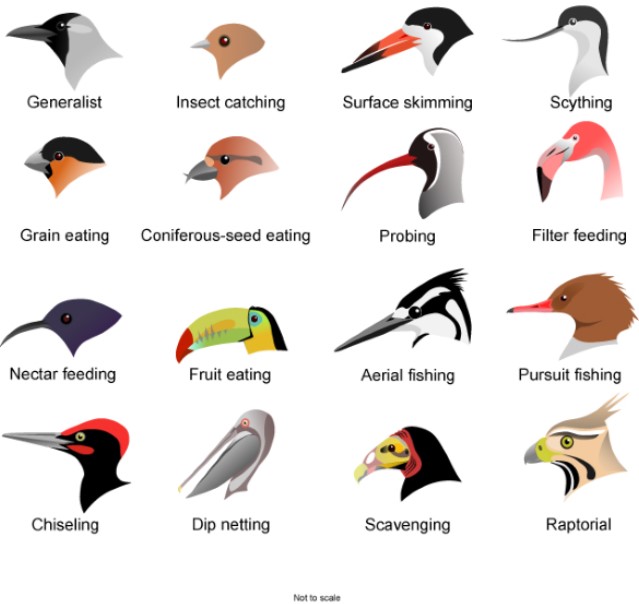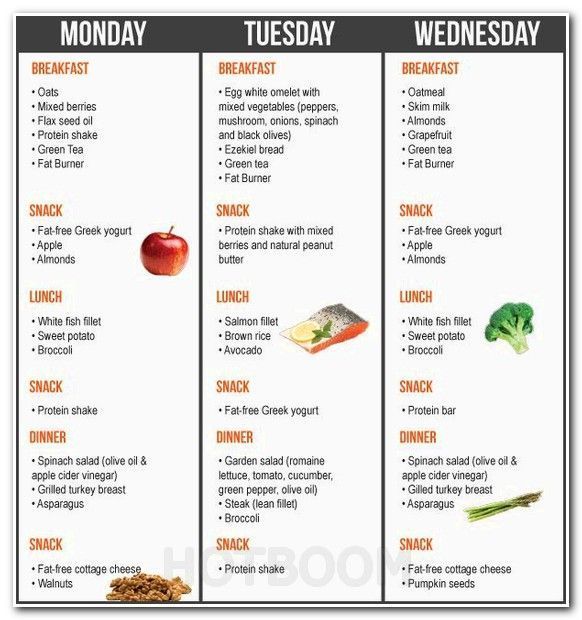Feeding a baby cereal for the first time
How to Get Started – The Baby's Brew
I will always remember feeding each of my babies their first foods. After months of only breastfeeding and bottles, my husband and I couldn’t wait to introduce the next milestone to each of our babies. But with the first baby at least, there was also apprehension. Our pediatrician had recommended we start with a single-grain baby cereal such as rice cereal, but I didn’t know which one to get and I wanted to make sure I fed my baby the right way!
So to get you started off on the right food with baby feeding 101, I’ve put together this guide to giving your baby cereal for the first time. And it will only get more exciting as you introduce other foods to your little one.
Choosing a First Baby CerealBefore you actually feed your baby, you have to choose what you want to give them from the array of cereals and other options available.
Most parents reach for the rice cereal to give their baby as their first food. I know I did as a new mom! It’s an easy choice and one that doctors suggest due to its benefits. It's easy to such as its digest, won’t trigger an allergic reaction and is tolerated well by babies who’ve only been fed breastmilk or formula. It’s also iron-fortified, which babies need as their iron stores start to deplete around 6 months of age.
Though rice cereal has traditionally been suggested as the best first food for your baby, even many doctors may still give this recommendation, it has gotten a bit of a bad rap in recent years due to the arsenic that’s found in rice - causing parents to look at other options. (This article from Healthy Children explains how you can ensure rice cereal can be used in a healthy diet for your baby.)
If you do choose rice cereal, you’ll want to start introducing other solids to your baby shortly so that’s not all that they are getting, as recommended by the FDA.
Fortunately, if you want to skip the rice cereal completely, you can! There is no need to feel like this is the only first food for your baby. Many experts share that any iron-fortified single-grain baby cereal is a great choice, such as baby oatmeal or barley. You can even start with other pureed foods which we discuss later on in this article.
When to Start Feeding Your Baby CerealSeveral years ago the recommendation was that parents could feed their babies at four months if they showed readiness signs. But medical advice evolves and this is a guideline that medical experts have changed to give babies the healthiest start possible.
It’s now suggested that it’s best to wait til closer to your baby’s ½ birthday to introduce solids, especially if he is breastfed. There’s really no reason to rush it!
But it’s not just age you want to pay attention to as we know that all babies develop at different rates.
Here are signs to look for that will let you know your baby is ready for solid foods:
- able to sit up supported in a high chair
- has proper head control
- no more tongue thrust
- eager to take a spoon
- are interested in the food that you are eating
If your baby isn’t yet showing these signs, you’ll want to wait a bit longer before starting baby cereal or other solid foods. No need to worry - all babies are ready in their own time! Your baby will continue to get the nutrition they need from their breastmilk or formula so you don’t need to be concerned that they are missing out on important nutrients. If you do have concerns, it’s always best to talk to your pediatrician.
Can you give your baby cereal in a bottle?Even though your well-meaning grandma may suggest that you mix cereal into your baby’s bottle to help fill them up so they can sleep better, this practice is actually not safe according to the CDC. In fact, they share that it won’t help your baby sleep better anyway. This practice puts your baby at risk for choking or overfeeding and also may encourage parents to start solid foods long before they are ready.
In fact, they share that it won’t help your baby sleep better anyway. This practice puts your baby at risk for choking or overfeeding and also may encourage parents to start solid foods long before they are ready.
Instead, follow the guideline to not feed your baby solid foods until he or she is at least 5-6 months in age and watch for the other readiness signs mentioned above. At this point you can feed your baby with a spoon and introduce finger foods as they are ready.
RELATED: Starting Solid Foods With Your Baby
How to Introduce Cereal to Your BabyBreastmilk and formula will continue to be your baby’s primary source of nutrition until the age of one, but cereal is a great way to get them started with supplemental nutrition and transition them to solid foods. So how do you go about it?
Here are the steps to follow to give your baby her first single-grain cereal:
- Make sure they meet the recommended readiness signs. This will not only make for a safe feeding experience for your little guy or gal, but it will also be a lot more enjoyable for you.

- Plan to feed your little one after they’ve had a full feeding of breastmilk or formula. This way their tummy will mostly be full which means they’ll likely be happy to try a little cereal. (If you try to introduce solids to a hungry baby they will most likely be uncooperative!) Initially you’ll only feed your baby once per day, and it’s up to you when you want that time to be. We recommend choosing a time that your baby is usually in good spirits!
- Follow the directions on the label of your chosen baby cereal. You don’t need much to start! 1 tablespoon of cereal mixed with breastmilk or formula until it’s a runny consistency will be plenty for those first couple of feedings. If your baby is used to drinking warm milk or formula, you’ll want to use that same temperature of milk to mix with your baby’s food. (This is why we love the Baby’s Brew portable bottle warmer...you can choose your baby’s milk temperature with the push of a button!)
- Be sure your baby is sitting upright.
 Ideally this would be in a highchair, but they could also be sitting on your lap. You’ll want them to be wearing a bib as a lot your little one’s food won’t make it into their mouth initially.
Ideally this would be in a highchair, but they could also be sitting on your lap. You’ll want them to be wearing a bib as a lot your little one’s food won’t make it into their mouth initially. - Use an infant spoon to feed your baby. Do your best to get the spoon into their open mouth, but just know it’s going to be a bit messy at first as they get the hang of what’s going on. It won’t be long before they are opening wide at mealtime!
- Watch for cues from your baby that show that they are full (or are just are no longer interested). If your baby turns their head, is fussy or won’t open their mouth to eat, it’s time to be “all done!”
And that’s it! You can do another feeding the next day (or you can just do every other day) with the same type of cereal. Be sure to wait three - five days before introducing another food so you can keep an eye out for any allergic reactions. This is the recommendation given by the CDC.
After a couple weeks to a month of successfully feeding your baby once per day you can move to twice per day.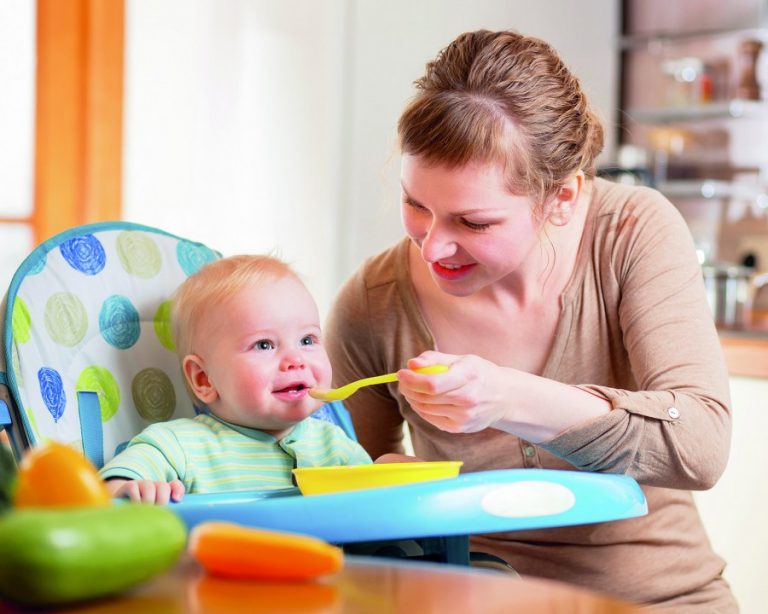
Some parents choose to start with a different food or may take baby cereal out of their little one’s diet altogether. Starting with other pureed foods instead is totally fine and may even work better for some babies. WebMD shares that both pureed vegetables or fruits are good starter foods and that there’s no rule saying that baby cereals must be first.
Some great first foods, if you want to skip the cereal route, include:
- Avocados
- Bananas
- Blended Red Meat (great source of iron)
- Squash
- Sweet Potatoes
- Pears
Just remember that these all need to be pureed and made into a runny consistency that’s easy for your baby to eat. Mixing with your baby’s warmed breastmilk or formula will help to bring this to a consistency that your baby can manage. You’ll also want to avoid giving your baby any of the top allergen foods such as the ones listed here unless you’ve been given different advice from your doctor. These are best introduced when your baby gets a little older.
These are best introduced when your baby gets a little older.
Still not sure which food to start with? It can be a bit overwhelming! This is a great conversation to have with your doctor before your baby turns 6 months and they can help guide you on what would be the best option. Whatever you choose, it is sure to be an exciting time for your family as your little guy or gal begins his journey of eating "real" food!
When, What, and How to Introduce Solid Foods | Nutrition
For more information about how to know if your baby is ready to starting eating foods, what first foods to offer, and what to expect, watch these videos from 1,000 Days.
The Dietary Guidelines for Americans and the American Academy of Pediatrics recommend children be introduced to foods other than breast milk or infant formula when they are about 6 months old. Introducing foods before 4 months old is not recommended. Every child is different. How do you know if your child is ready for foods other than breast milk or infant formula? You can look for these signs that your child is developmentally ready.
Your child:
- Sits up alone or with support.
- Is able to control head and neck.
- Opens the mouth when food is offered.
- Swallows food rather than pushes it back out onto the chin.
- Brings objects to the mouth.
- Tries to grasp small objects, such as toys or food.
- Transfers food from the front to the back of the tongue to swallow.
What Foods Should I Introduce to My Child First?
The American Academy of Pediatrics says that for most children, you do not need to give foods in a certain order. Your child can begin eating solid foods at about 6 months old. By the time he or she is 7 or 8 months old, your child can eat a variety of foods from different food groups. These foods include infant cereals, meat or other proteins, fruits, vegetables, grains, yogurts and cheeses, and more.
If your child is eating infant cereals, it is important to offer a variety of fortifiedalert icon infant cereals such as oat, barley, and multi-grain instead of only rice cereal.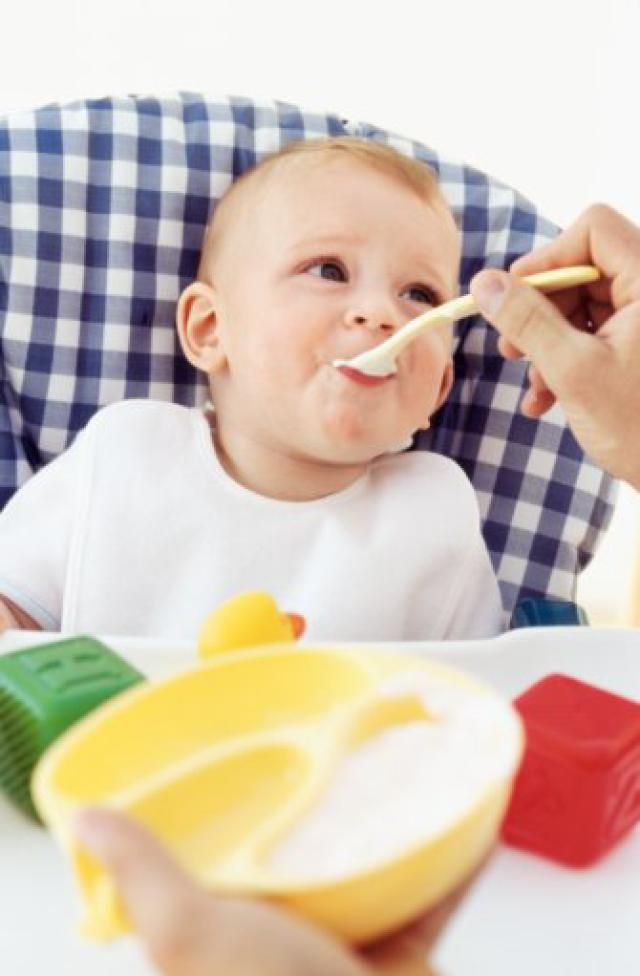 Only providing infant rice cereal is not recommended by the Food and Drug Administration because there is a risk for children to be exposed to arsenic. Visit the U.S. Food & Drug Administrationexternal icon to learn more.
Only providing infant rice cereal is not recommended by the Food and Drug Administration because there is a risk for children to be exposed to arsenic. Visit the U.S. Food & Drug Administrationexternal icon to learn more.
How Should I Introduce My Child to Foods?
Your child needs certain vitamins and minerals to grow healthy and strong.
Now that your child is starting to eat food, be sure to choose foods that give your child all the vitamins and minerals they need.
Click here to learn more about some of these vitamins & minerals.
Let your child try one single-ingredient food at a time at first. This helps you see if your child has any problems with that food, such as food allergies. Wait 3 to 5 days between each new food. Before you know it, your child will be on his or her way to eating and enjoying lots of new foods.
Introduce potentially allergenic foods when other foods are introduced.
Potentially allergenic foods include cow’s milk products, eggs, fish, shellfish, tree nuts, peanuts, wheat, soy, and sesame. Drinking cow’s milk or fortified soy beverages is not recommended until your child is older than 12 months, but other cow’s milk products, such as yogurt, can be introduced before 12 months. If your child has severe eczema and/or egg allergy, talk with your child’s doctor or nurse about when and how to safely introduce foods with peanuts.
Drinking cow’s milk or fortified soy beverages is not recommended until your child is older than 12 months, but other cow’s milk products, such as yogurt, can be introduced before 12 months. If your child has severe eczema and/or egg allergy, talk with your child’s doctor or nurse about when and how to safely introduce foods with peanuts.
How Should I Prepare Food for My Child to Eat?
At first, it’s easier for your child to eat foods that are mashed, pureed, or strained and very smooth in texture. It can take time for your child to adjust to new food textures. Your child might cough, gag, or spit up. As your baby’s oral skills develop, thicker and lumpier foods can be introduced.
Some foods are potential choking hazards, so it is important to feed your child foods that are the right texture for his or her development. To help prevent choking, prepare foods that can be easily dissolved with saliva and do not require chewing. Feed small portions and encourage your baby to eat slowly. Always watch your child while he or she is eating.
Always watch your child while he or she is eating.
Here are some tips for preparing foods:
- Mix cereals and mashed cooked grains with breast milk, formula, or water to make it smooth and easy for your baby to swallow.
- Mash or puree vegetables, fruits and other foods until they are smooth.
- Hard fruits and vegetables, like apples and carrots, usually need to be cooked so they can be easily mashed or pureed.
- Cook food until it is soft enough to easily mash with a fork.
- Remove all fat, skin, and bones from poultry, meat, and fish, before cooking.
- Remove seeds and hard pits from fruit, and then cut the fruit into small pieces.
- Cut soft food into small pieces or thin slices.
- Cut cylindrical foods like hot dogs, sausage and string cheese into short thin strips instead of round pieces that could get stuck in the airway.
- Cut small spherical foods like grapes, cherries, berries and tomatoes into small pieces.

- Cook and finely grind or mash whole-grain kernels of wheat, barley, rice, and other grains.
Learn more about potential choking hazards and how to prevent your child from choking.
Top of Page
Nursing nipple care | Breast Care
Breastfeeding is good for you and your baby, but it can be a real challenge for the nipples. Check out our tips and tricks to help reduce the pain.
Share this information
Sioned Hilton, health visitor, neonatal nurse and lactation consultant:
A mother of three, Sioned Hilton has been supporting families with newborns and young children for over 30 years. She provides advice on breastfeeding and pumping, both in clinics and at home. In addition, Schoned writes articles for parenting magazines, attends conferences, and conducts seminars for attending physicians.
New mothers often hear: "Breastfeeding doesn't have to be painful." However, in the early days, many are faced with the opposite.![]()
In most women during pregnancy, the nipples enlarge and become more sensitive. When a newborn baby begins to suckle, it creates a certain pressure, and this is a completely new and unfamiliar sensation for a woman (at least for a first-time mother).
Feedings can be prolonged for a long time, sometimes up to an hour, and the child may ask to be breastfed up to 13 times a day. 1 This sucking, pressure and saliva of the baby can cause sore nipples.
Remember how your lips crack in the wind and sun. The more often you lick them, the more they will dry and become inflamed. Therefore, lips require good hydration to soften, protect and speed up the healing of cracks. The same thing happens with nipples.
However, sore nipples usually don't last more than a couple of weeks and go away as your baby and your breasts get used to breastfeeding. It is important to start nipple care as early as possible to prevent the situation from worsening. Therefore, if your nipples become very inflamed, crack or bleed, contact your doctor as soon as possible. 2
2
Prevention is better than cure, so check out our tips.
Check your baby's latch-on
Correct latch is the key to pain-free breastfeeding. When putting the baby to the breast, point the nipple towards his palate. This will allow him to grab the nipple and the part of the areola (the darker skin around the nipple) underneath. When the nipple and part of the breast is in the baby's mouth, feeding is taking place correctly. 3
For the first few days, see a lactation consultant or specialist to check for proper latch. He will be able to give you advice on how to solve problems and recommend other feeding positions that will make it less painful for you to feed your baby.
Check tongue tie
Tongue tie (ankyloglossia) occurs in 4-11% of
newborns. 4 At the same time, the strip of skin that attaches the tongue to the bottom of the mouth - the so-called frenulum - is too short. A child with a shortened frenulum will not be able to open his mouth wide enough to latch onto the breast well, and his tongue will not cover the lower gum when sucking. As a result, the baby will be nervous, and your nipples may become inflamed.
As a result, the baby will be nervous, and your nipples may become inflamed.
The doctor or lactation consultant must examine the baby to make this diagnosis. The problem of a shortened bridle is solved by a simple undercutting procedure. It is performed by a doctor, and is usually done without blood and does not require anesthesia. Cutting the bridle allows you to restore the normal feeding mechanism almost instantly. 5
Less common in children is a short frenulum of the upper lip. In this case, it is necessary to dissect the skin that connects the upper lip to the gum. A shortened frenum of the tongue or upper lip in a newborn is not always detected during the examination conducted immediately after birth, so if you think that this is what is causing your nipples pain, seek medical advice as soon as possible. 4
Breastfeeding Tips
- Wash your breasts with water only when you shower or bathe. Small bumps on the areola (Montgomery's glands) secrete oil that moisturizes and protects your nipples.
 Soaps and shower gels can strip away this natural defense, causing dryness and irritation. 6
Soaps and shower gels can strip away this natural defense, causing dryness and irritation. 6 - Pat the nipples gently with a soft towel or simply let them air dry. In the past, women were often advised to rub their nipples to make them stiffer, but thankfully, such advice is a thing of the past!
- Do not wash breasts or nipples before feeding. The bacteria found on the surface of the breast actually help the baby's intestinal microflora to develop. 7
- Fresh breast milk helps to heal cracked nipples, 8 so rub a few drops of milk into them before and after feeding.
- Change your bra pads often if they get wet. This will reduce the risk of bacterial and fungal infections, including thrush. 6
- It is not necessary to increase the intervals between feedings to give the nipples a "rest". For a baby to be healthy and grow well, it needs to be fed on demand. Remember, frequent feeding stimulates and maintains milk production, so keep feeding despite the pain.
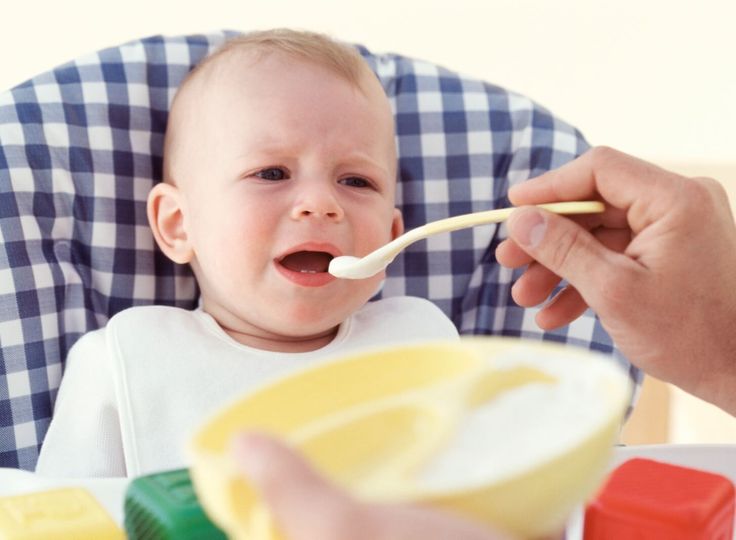 9
9
Healthy teat care products
- Pure lanolin teat cleaner, a natural product derived from sheep's wool. It moisturizes and promotes healing of the nipples. This cream is safe for the baby, so it does not need to be washed off before feeding.
- Hydrogel Pads* can be applied to sore nipples to relieve pain while feeding and help promote healing. They can even be stored in the refrigerator to enhance the soothing cooling effect.
- Breast pads* fit into the bra. They help prevent nipple irritation from clothing and have air holes to help nipples heal.
- Nursing Bras** are made from breathable material such as cotton or a special fabric that dries quickly and wicks moisture away from sore nipples.
- Nursing pads* are special silicone pads that fit over the nipples. They have small holes through which milk flows when you are breastfeeding. The pads help to protect the skin underneath and help the baby to better latch on to the nipple by making the nipple stiffer.
 Do not use nursing pads for a long time. If you have problems or pain, contact your healthcare professional or lactation consultant.
Do not use nursing pads for a long time. If you have problems or pain, contact your healthcare professional or lactation consultant.
When to Seek Medical Care
The soreness should go away as your nipples and baby get used to breastfeeding. It is worth repeating that the main cause of sore nipples is improper grip. If your lactation consultant has not been able to resolve your pain while feeding, see another specialist and a third if necessary.
If nipple pain persists or if you notice unusual symptoms, talk to your doctor. The appearance of white spots or flakes on the nipples may be a sign of thrush, whitish or bluish nipples may indicate a circulation disorder such as Raynaud's disease (vasospasm), and pus and redness indicate an infection. 2
Literature
1 Kent JC et al. Volume and frequency of breastfeedings and fat content of breast milk throughout the day. Pediatrics. 2006;117(3): e 387-395. - Kent J.S. et al., "Amount and frequency of breastfeeding and fat content of breast milk during the day." Pediatrix (Pediatrics). 2006;117(3):e387-95.
- Kent J.S. et al., "Amount and frequency of breastfeeding and fat content of breast milk during the day." Pediatrix (Pediatrics). 2006;117(3):e387-95.
2 Berens P et al. Academy of Breastfeeding Medicine. ABM Clinical Protocol#26: Persistent pain with breastfeeding. Breastfeeding Medicine. 2016;11(2):46-53. - Behrens, P. et al., Academy of Breastfeeding Medicine, AVM Clinical Protocol #26: Persistence of Breastfeeding Pain. Brestfeed Med (Breastfeeding Medicine). 2016;11(2):46-53.
3 Cadwell K. Latching - On and Suckling of the Healthy Term Neonate: Breastfeeding Assessment. J Midwifery & Women's Health. 2007;52(6):638-42. — Cadwell, K., "Latching and sucking in healthy newborns: evaluation of breastfeeding." F Midwifery Women Health. 2007;52(6):638-642.
4 Segal LM et al. Prevalence, diagnosis, and treatment of ankyloglossia: methodological review.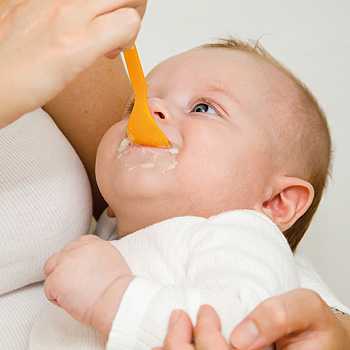 Canadian Family Physician. 2007;53(6):1027-1033. - Segal L.M. et al., Incidence, Diagnosis, and Treatment of Ankyloglossia: A Methodological Review. Canadian Family Physic. 2007;53(6):1027-1033.
Canadian Family Physician. 2007;53(6):1027-1033. - Segal L.M. et al., Incidence, Diagnosis, and Treatment of Ankyloglossia: A Methodological Review. Canadian Family Physic. 2007;53(6):1027-1033.
5 O'Shea JE et al. Frenotomy for tongue - tie in newborn infants. The Cochrane Library. 2017. - O'Shea J.I. et al., "Dissection of the frenulum in the newborn", The Cochrane Labrery (Cochrane Library), 2017.
6 Jacobs A et al. S3-guidelines for the treatment of inflammatory breast disease during the lactation period. Geburtshilfe und Frauenheilkunde. 2013;73(12):1202-1208. - Jacobs A. et al., "Recommendations S -3 for the treatment of inflammatory diseases of the breast during breastfeeding. Geburtskhilfe und Frauenheilkünde. milk bacterial communities and establishment and development of the infant gut microbiome JAMA pediatrics 2017;171(7):647-654 - P. S. Pannaraj et al. development of the neonatal gut microbiome." JAMA pediatric. 2017;171(7):647-654.
S. Pannaraj et al. development of the neonatal gut microbiome." JAMA pediatric. 2017;171(7):647-654.
8 Mohammadzadeh A et al. The effect of breast milk and lanolin on sore nipples. Saudi medical journal. 2005;26(8):1231-1234. — Mohammedzade A. et al., "Effects of breast milk and lanolin on sore nipples." Saudi Medical Journal. 2005;26(8):1231-1234.
9 Kent JC et al. Principles for maintaining or increasing breast milk production. J Obstet , Gynecol , & Neonatal Nurs . 2012;41(1):114-121. - Kent J.S. et al., "Principles for Maintaining and Increasing Milk Production". J Obstet Ginecol Neoneutal Nurs. 2012;41(1):114-121.
Read instructions before use. Consult a specialist about possible contraindications.
* RC № № ФСЗ 2010/07352 dated 1907.07.2010
** RU No. FZZ 2009/05592 dated 11.25.2009
FZZ 2009/05592 dated 11.25.2009
Proper nutrition of the child is the key to health - Children's City Polyclinic No. 1
happy.
From childhood, we must teach our children to choose from the variety of products those that are really good for health. The nutrition of children is somewhat different from the nutrition of adults. If the child's nutrition system is built correctly, then the child develops normally, both physically and mentally.
Make your family's way of life by introducing your child to proper nutrition every day. There is no need to arrange constant lectures from this on the topic of what is useful and what is harmful. By actively communicating with your child, setting an example, you instill good eating habits.
Only good things should be spoken at the table. The situation should help the child to relax, then the appetite will be good and the mood will be friendly. Children can help you with serving and decorating dishes.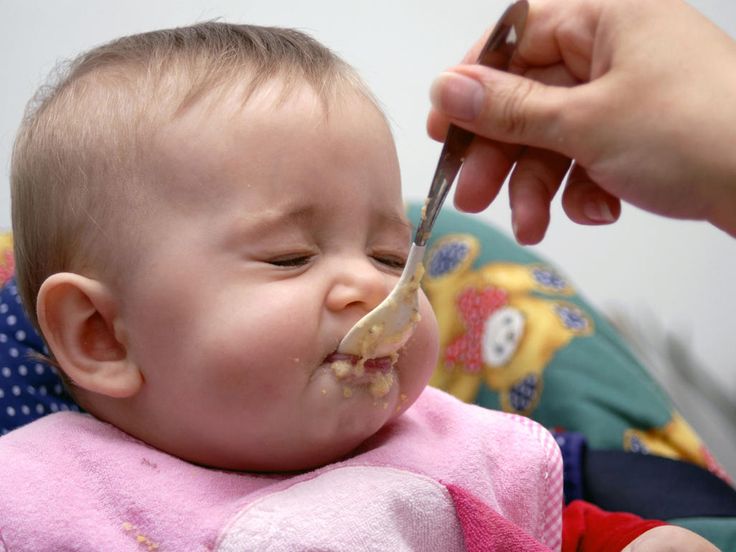 When serving vegetables and fruits, ask the children what vitamins and minerals they contain and why they are so useful. In order to organize the proper nutrition of the child, you need to follow several important rules:
When serving vegetables and fruits, ask the children what vitamins and minerals they contain and why they are so useful. In order to organize the proper nutrition of the child, you need to follow several important rules:
Rule 1
Food should be varied.
This is an important condition for the child's body to receive all the substances necessary for growth and development. Every day, the child's menu should include: fruits and vegetables; meat and fish; milk and dairy products; grain products (bread, cereals, cereals). Insufficiency or excess of food consumed by a child can adversely affect the activity of the gastrointestinal tract, contribute to metabolic disorders, increase overweight (even to various degrees of obesity) or lead to malnutrition.
If the child refuses to eat a healthy dish, invite him to experiment and make the dish unusual.
So, with the help of dried fruits and nuts, you can put a funny face on porridge, use ketchup and greens to draw a pattern on scrambled eggs, put mashed potatoes on a plate in the form of a snowman figure, etc.
What should not be used in children's nutrition:
- Offal other than liver, tongue, heart; blood, liver, raw smoked sausages.
- Fat-fried (deep-fried) food and culinary products, chips.
- Curds, condensed milk with vegetable fats.
- Koumiss and fermented milk products containing ethanol (more than 0.5%).
- Cream confectionery containing vegetable protein.
- First and second courses based on fast food concentrates.
- Vinegar, mustard, horseradish, hot peppers and other hot spices and food products containing them, including hot sauces, ketchups, mayonnaises and mayonnaise sauces.
- Pickled vegetables and fruits.
- Natural coffee and carbonated drinks, apricot kernels, peanuts.
- Products, including confectionery, containing alcohol.
- Food products containing a large amount of food additives in their composition (information is indicated by the manufacturer on consumer packaging).

- Dry concentrates for cooking first and second courses (soups, Dosherak vermicelli, cereals).
Rule 2
The child must eat regularly.
Compliance with the diet of children is of great importance for the absorption of nutrients by the body. Preschool children are recommended to eat 4-5 times a day, every 3 hours, at the same time, distributing the diet as follows: breakfast - 25%, lunch - 35%, afternoon snack - 15%, dinner - 25% . At school age, it is advisable to have four meals a day, every 4 hours with an even distribution of the daily ration: breakfast - 25%, second breakfast - 20%, lunch - 35%, dinner - 20%.
Try to stop snacking and teach your child to eat only at the table. If this still doesn't work, offer fruit, biscuits, juice for a snack - food that will help drown out hunger, but will not ruin your appetite.
An important health-improving measure for children-students is the correct organization of meals at school in the form of hot school breakfasts and lunches in extended-day groups, the diet of which should be 50-70% of the daily norm, which parents, unfortunately, have little are paying attention.



